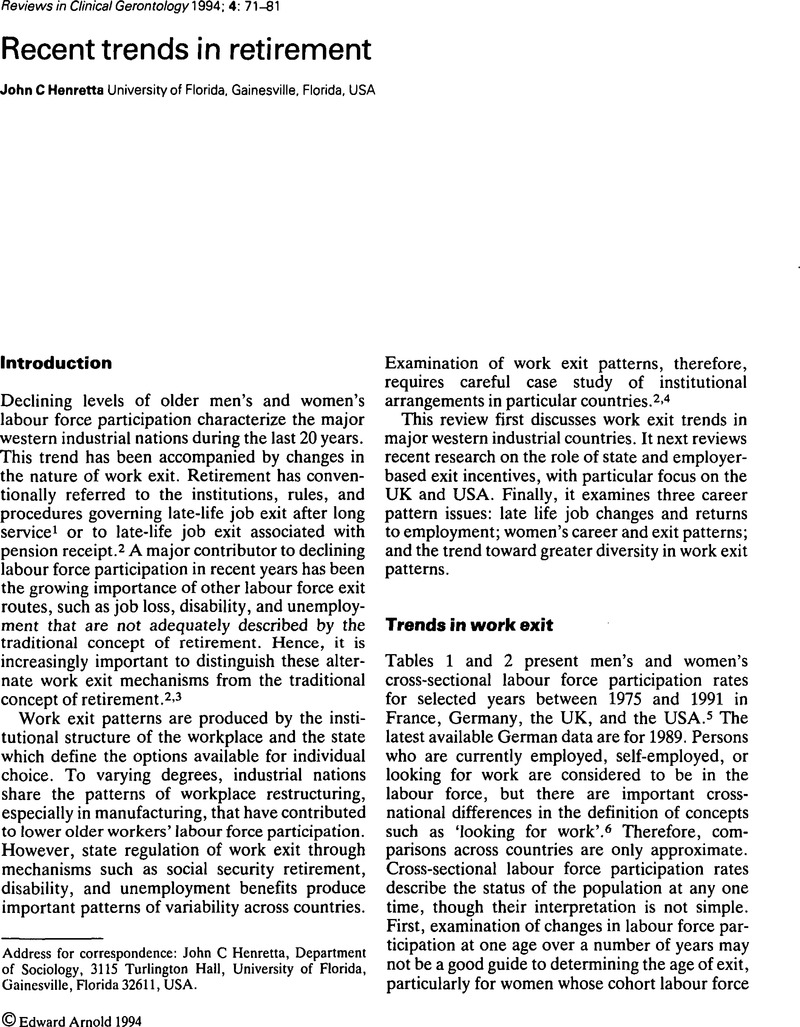Crossref Citations
This article has been cited by the following publications. This list is generated based on data provided by Crossref.
HENRETTA, JOHN C.
and
LEE, HYUNKEE
1996.
Cohort Differences in Men's Late-Life Labor Force Participation.
Work and Occupations,
Vol. 23,
Issue. 2,
p.
214.
Grundy, Emily
1996.
Age, ‘dependency’ and intergenerational relationships.
Reviews in Clinical Gerontology,
Vol. 6,
Issue. 4,
p.
303.
Henretta, John C.
2000.
The Future of Age Integration in Employment.
The Gerontologist,
Vol. 40,
Issue. 3,
p.
286.
Adams, Gary
and
Rau, Barbara
2004.
Job Seeking Among Retirees Seeking Bridge Employment.
Personnel Psychology,
Vol. 57,
Issue. 3,
p.
719.
Shin, Soo-Young
and
Yoon, Chung-Sook
2011.
First-time Homeownership of Married Households in Korea.
Journal of the Korean housing association,
Vol. 22,
Issue. 1,
p.
11.
Örestig, Johan
Strandh, Mattias
and
Stattin, Mikael
2013.
A Wish Come True? A Longitudinal Analysis of the Relationship between Retirement Preferences and the Timing of Retirement.
Journal of Population Ageing,
Vol. 6,
Issue. 1-2,
p.
99.
Iparraguirre, José Luis
2020.
Economics and Ageing.
p.
3.





